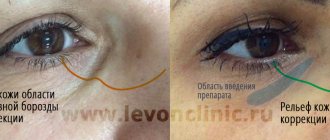» Chamomile essential oil
Chamomile is one of the most common plants. It is recognized by all types of medicine. Snow-white flowers will become the basis for preparing herbal teas, will help tell fortunes for love and will become the basis for the extraction of such a unique substance as chamomile essential oil.
The properties of medicinal chamomile and the oil that is extracted from it were appreciated many thousands of years ago by the ancient Greeks and Romans. They used the flowers of this beautiful plant to treat many diseases.
Chamomile essential extract is obtained using a method such as steam distillation. The inflorescences of the plant are processed. This method is quite labor-intensive, so in order to obtain only 1 kg of essential oil, you need to process about 200 kg of raw materials. But there is a little trick here: not all types of chamomile are suitable for the production of essential oil. However, there are also those types that are firmly entrenched in the market.
- Moroccan chamomile grows in Africa, in the northwest of the continent. This type of plant is also cultivated in Spain and Israel. Very high-quality oil is obtained from Moroccan chamomile, but it appeared on the market quite recently, which is why it is called “the youngest.”
- Roman chamomile grows in temperate climates. When producing oil, you can find raw materials from France and Hungary, Germany and Great Britain, Belgium and even England. This type of chamomile is the most expensive, as is the oil that is obtained from it.
- Chamomile (medicinal chamomile, blue, German), grows in the vastness of Russia, Europe, and Central Asia. You can find such a daisy very far from Russia - in Australia and North America. This is the most common type of raw material for the production of essential oil; its price is affordable for almost any consumer.
Characteristics of chamomile essential oil
Rich color of fresh chamomile oil
Chamomile oil is traditionally extracted from the flowers, which are first dried. In addition, oil can also be produced from inflorescences. You can easily guess what material was used by the color of the essential oil: from a deep dark blue to a less intense light blue. Also, the color of the essential oil indicates the freshness of the product: for example, a dark blue tint can easily turn into green or brown if stored improperly.
The aroma of chamomile oil may surprise you. You most likely will not recognize in the aroma of essential oil the smell of the very chamomile that grows in the meadow. The smell of the oil is completely different: deep, persistent, much stronger than the smell of chamomile. The aroma is highlighted by a sweet herbaceous note, tartness of the top notes, hints of hay, fruit, tobacco and spices. Chamomile essential oil may have a complementary aroma. Combinations with rosewood, bergamot, cypress, lavender and orange will be winning.
Chemical composition of chamomile oils
- Flavonoids (luteolin, apigenin).
- Alpha bisabolol.
- Coumarins are valuable in cosmetology as flavoring agents.
- Bisabolol is a natural, safe substance used in children's cosmetics.
- Farnesol - has a slight scent of lily of the valley, improves the functioning of the sebaceous glands.
- Cadinenes are carbohydrates.
- Terpenes are oxygen-containing organic compounds.
- Limonene - tones, gives a pleasant note of lemon and pine scents.
- Cumicaldehyde - imparts a light, pleasant cumin aroma.
Azulene (Chamazulene) is an active, anti-allergenic oily substance with a strong aroma. It is the main component of chamomile.
using chamomile essential oil for hair
Beneficial properties of chamomile essential oil
Chamomile essential oil is a substance consisting of many components, each of which is unique in itself. Chamazulene, for example, has an anti-inflammatory and wound-healing effect, and farnesol tones the skin well and removes oily film from it. Limonene gives the oil a fresh pine or pleasant lemon aroma. Combining in one composition, these components of chamomile essential oil provide incredible benefits.
- Beneficial effects on the sphere of human emotions. The strong sedative effect that this oil has helps eliminate anxiety, relieve mental and emotional stress, and get rid of fears. It is this beneficial property of chamomile oil that makes it very beneficial for people suffering from insomnia.
- Beneficial effects on the skin. Festering wounds, burns, cuts, ulcers and abscesses - essential chamomile oil will help cope with all these problems. After using it, the skin will become more elastic, clean, moisturized, and nourished. Peeling will disappear, and herpes, allergies and dermatitis will occur in a milder form.
- Beneficial physiological effects. If you are worried about muscle or lumbar pain, menstrual ailments or ear pain, migraine or neuralgia, the beneficial properties of chamomile oil will come to your aid. The oil will also help eliminate diarrhea, gastritis, flatulence and vomiting.
Medicinal properties
Of all the types of essential oils extracted from the flowers of various varieties of chamomile, it is the blue one that has the widest range of healing properties. The anti-inflammatory and calming effect of this aroma oil is most pronounced, while the relief of both internal and external inflammation is expressed in diseases of almost all etymologies.
- Relieves irritation and inflammation from insect bites and burns of all types.
- In addition to fighting inflammatory processes, it has a healing, restorative effect on the mucous membranes, including the oral cavity and digestive tract.
- When taken internally, it stimulates appetite, activates digestion processes, and also has a stimulating effect on the gallbladder and liver.
- For the urinary system, it plays the role of an active disinfectant and diuretic, helping to stop infectious processes and effectively cure various diseases, including cystitis of any etymology.
- It has the ability to optimize local blood circulation, promote the healing of open and poorly closing wounds, abscesses and ulcers, and helps cope with purulent processes during ingrown nails.
- As part of massage oils, it perfectly relieves pain symptoms in case of muscle pain, joint inflammation or arthritis, sprains, bursitis, ligament and tendon injuries.
- Chamomile oil is perfect for daily oral care, providing a milder effect than aggressive pine oils or mint. Relieves pain from sore throat and throat inflammation, eliminates hoarseness.
- This is one of the soft “female” oils, which allows you to quickly relieve unpleasant symptoms, irritability, depressive disorders and tension during menopause and before menstruation, has an antibacterial effect when applied topically, regulates secretions, improves acid balance and microflora. Chamomile has long been considered a herb that facilitates childbirth and protects against postpartum complications; the same properties are characteristic of essential oil from pharmaceutical chamomile.
- Actively removes excess fluid from the body.
- As a prophylactic agent, it helps restore immunity, strengthens the body's defenses, thereby preventing colds and infections, and has a general antipyretic and disinfecting effect during the development of the disease.
This is one of the best oils for aromatherapy procedures and mixtures for children, because it is really difficult to find an oil that is softer in its effect.
Application in cosmetology and in everyday life
Use of chamomile oil for cosmetic purposes
Cosmetologists rightly consider chamomile extract one of the main means for caring for sensitive skin. If it is flaky and prone to redness, the oil will smooth the skin, soothe the epidermis, have a mild whitening effect and a rejuvenating effect. If the use of this cosmetic product is systematic, the blood vessels will narrow and the capillary network will become less noticeable within a few weeks.
Common skin diseases can also be easily treated with the oil. If your skin is susceptible to allergic reactions, such as hives, dermatitis, eczema or acne, then chamomile oil will come to the rescue.
Chamomile oil will also have a positive effect on your hair. They will become elastic, shiny, strong and durable. Chamomile oil will restore the hair structure, but it should be borne in mind that a lightening effect is possible, however, only with regular use.
Chamomile essential oil can also be used in everyday life. If there is a need to repel insects or soften children's skin after a walk in the sun, this product will have a calming and moisturizing effect.
Seeing a doctor
Dermatological diseases are varied and insidious, and sometimes without a specialist’s opinion and tests it is impossible to make an accurate diagnosis. If you have not been to a doctor before, then if red rashes, peeling or itching appear, it is better to immediately make an appointment with a dermatologist. Do not self-diagnose, and certainly do not prescribe treatment based on a diagnosis you made yourself. Thus, care for allergic dermatitis is fundamentally different from the treatment of psoriasis, and outwardly these diseases can be confused.
Chamomile essential oil: contraindications
Of course, this oil is one of the most gentle, soft and delicate among all the esters, but it also has certain limitations. Thus, you should use chamomile oil with caution during pregnancy, since during the first months the active influence of any active drugs on the female body is undesirable.
If you are undergoing treatment with homeopathic medicines, then we must not forget that the simultaneous use of chamomile essential oil is contraindicated. If homeopathic preparations are not used, you can safely use chamomile oil: it does not have an irritating or other unpleasant effect on the skin. Can be applied in its pure form.
Individual characteristics of the body should also be taken into account when using chamomile extract. Taking into account all the positive effects on the skin and the human body as a whole, the manifestation of allergic reactions is not excluded, therefore it is recommended to conduct a sensitivity test.
How to use chamomile essential oil for the body
Massage with chamomile oil
The method of using chamomile essential oil depends on what ailment you are struggling with or what cosmetic defect you are trying to cope with. This substance is used depending on the circumstances. So, if your skin has ceased to please you with its appearance, has begun to peel and dry, then an oil massage would be quite appropriate:
- mix equal amounts of olive and chamomile essential oils in a bowl;
- moisten your fingertips in the resulting mixture and rub the oil into the skin with gentle massaging movements;
If the skin has received more serious damage and is at risk of developing or worsening stretch marks or cellulite, you can do an even more effective massage:
- mix the essential oils of chamomile, olive and walnut in equal proportions;
- Rub the resulting mixture into the skin of problem areas every day.
Children's skin requires special care. If irritation occurs, you can lubricate the baby's skin with chamomile oil before putting on a diaper. This will save your baby from diaper rash and skin chafing.
The beneficial properties of chamomile can be useful for those who have rough or dry skin on their hands. Add 2-3 drops of oil to the cream, and the skin will become velvety and soft. If this measure does not help, you can increase the time the oil remains on the skin by taking an oil bath.
Problematic legs will find relief after taking baths with chamomile oil. Bath time is 15 minutes. After this procedure, fatigue will disappear, the skin of your legs will become soft, lightness will appear, and if you suffer from fungal diseases, you will feel the long-awaited relief.
How to use chamomile essential oil for hair
Any person’s hair responds positively to any care procedures. After using chamomile oil, hair will become stronger, hair growth will accelerate, and hair loss will stop. For this result, chamomile essential oil should be used according to the following scheme:
- mix 8 drops of rosemary oil, 12 drops of cedar oil and 2 tbsp. olive and chamomile oils;
- Apply this mixture to your hair, rub in with light movements and leave for 20 minutes;
- After time, rinse with shampoo.
Dry and brittle hair are quite unpleasant manifestations of hair problems. Chamomile essential oil will again be the main assistant in eliminating these problems. Its benefits can hardly be overestimated. To nourish your hair, prepare the following composition:
- mix 10 drops of lavender, 3 - chamomile and 50 ml - olive oils;
- the mixture must be heated, applied to the hair, covered with polyethylene and wrapped in a towel;
- Recommended exposure time is 30 minutes. After the procedure, the mixture should be washed off with shampoo. If you don’t have free time for a mask, you can use the properties of chamomile in another way: add a few drops of chamomile essential oil to your shampoo.
Skin care for atopic dermatitis
The second half of treatment is the elimination of symptoms, namely dryness, itching, redness and pain. Daily care consists of gentle cleansers and intense moisturizers. Areas affected by atopic dermatitis require gentle skin care products. During an exacerbation, patients with dermatitis need anti-inflammatory drugs. Many of these medications are hormonal and should only be taken as directed by a doctor. A dermatologist can also prescribe special procedures (wraps, lotions, applications, etc.).
Facial skin care for dermatitis
If facial skin is damaged, it is necessary to change your daily care to a more gentle one. Hydrophilic oils for washing are an excellent choice - they do not dry the skin, carefully remove impurities and do not cause irritation.
Bath procedures
For dermatitis, it is better to shorten the duration of any water procedures: instead of taking a long bath, take a quick shower. Reduce the temperature of the water for washing - hot water quickly deprives the skin of moisture. For people with dermatitis, the optimal temperature is 32–35°C.
Try to avoid aggressive exfoliators, hard washcloths, and scrubs. Instead, choose gentle cleansers such as gels and oils that do not contain soap. Immediately after your shower, apply moisturizer to prevent your skin from losing moisture. This is especially important in winter, when both cold air and central heating dry out the skin.
In children, care for atopic dermatitis is absolutely similar. Pay special attention to the choice of moisturizers, look for hypoallergenic formulations approved by pediatric dermatologists.
How to use chamomile essential oil for the face
It is better to use pure oil for the face
The properties and use of chamomile ether for the body and the body as a whole is not a complete list of the merits of this unique product. Using facial oil, you will enjoy the feeling of soft velvety skin. To nourish and moisturize your skin, do the following:
- mix 4 drops of chamomile oil with finely grated cucumber. Apply to your face as a mask and leave for 20 minutes. A delicate, even complexion is a result that should please you.
So, the benefits of chamomile essential oil are obvious. For cosmetic purposes, it is better to buy pure oil, but a cheaper option will be one where chamomile oil is diluted with other, cheaper base oils. The choice is yours.
Dosages
Blue chamomile oil is used in all aromatherapy methods, with the recommended dosages being:
- 1 drop for oral administration 2 times a day with dried apricots or 2-3 times with jam or honey, washed down with kefir, juice or warm tea (taking 1 drop can be replaced by mixing 4-6 drops of oil with 100 ml of sweet sauce, jam or honey followed by 1 tsp of the mixture up to 4 times a day);
- no more than 1-2 drops for hot or cold inhalations, while it is better to limit the procedure time to a maximum of 7 minutes;
- from 4 to 7 drops for aromatic baths, both general and sitz, and about 3-4 drops for foot baths;
- from 2 to 4 drops for aromatizing the air in a bath or sauna, for microenemas (per tablespoon of wheat germ oil or St. John's wort base);
- from 2 to 3 drops for rinsing, diluting the oil in honey or soda and then mixing with a glass of heated, but not too hot water;
- from 3 to 7 drops for massage or rubbing, diluted in 10 ml of base;
- 15 to 20 drops of chamomile oil mixed with a double dose of wheat germ, St. John's wort or black cumin oils for warm compresses and applications;
- 3-4 drops of chamomile oil, diluted in two teaspoons of St. John's wort oil as nasal drops (3 drops every hour), and in the same dosage for aroma lamps and douching (per glass of warm water when dissolved in soda);
- pure oil in the required quantity for applications;
- 3 drops of chamomile oil per 50 g of vodka for a refreshing and deodorizing lotion.










